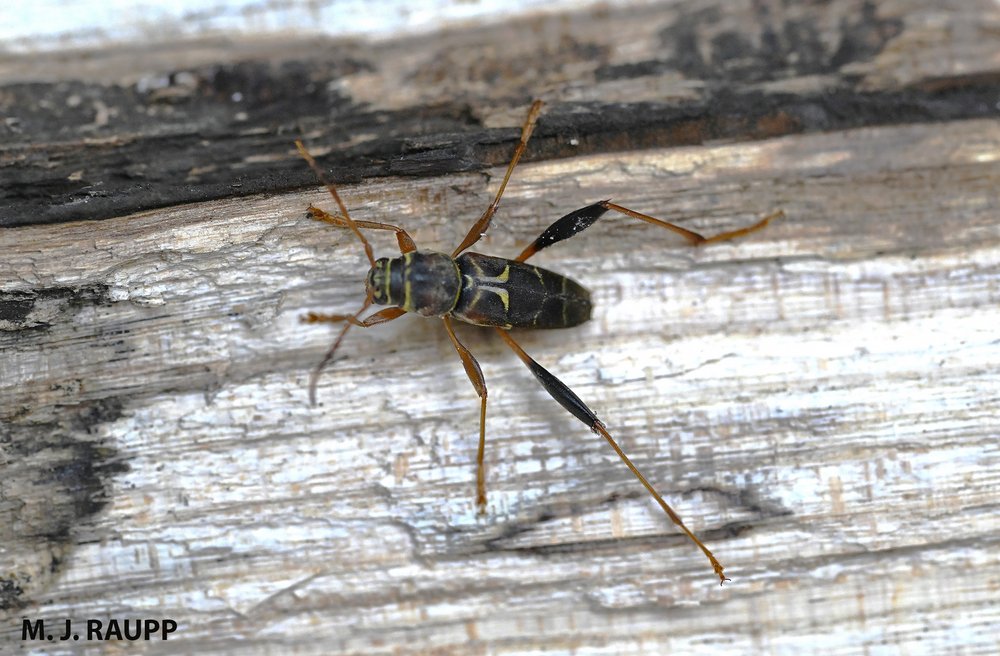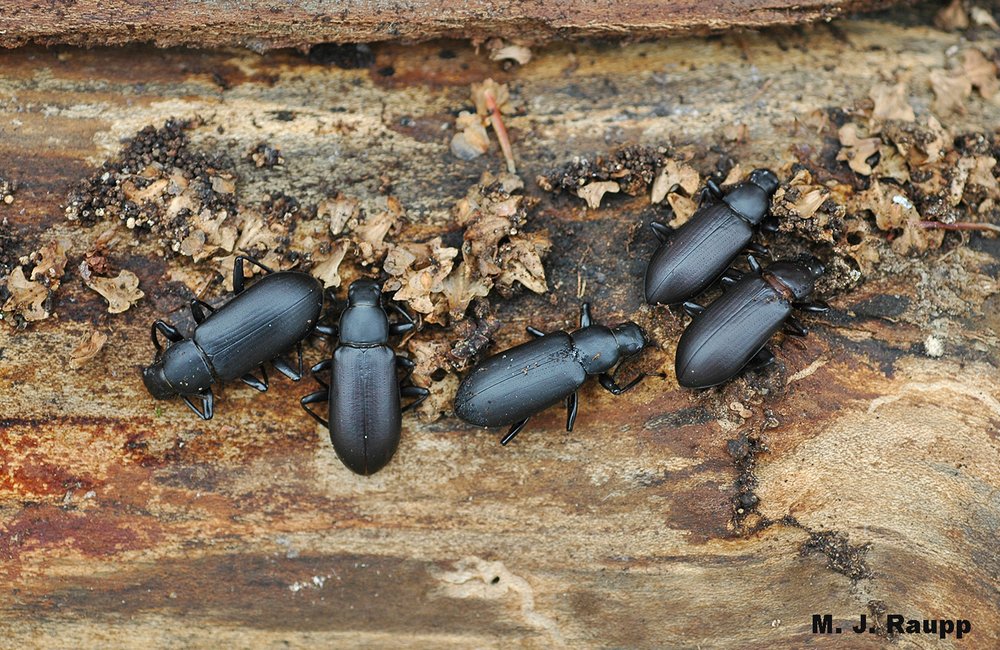
This handsome longhorn beetle developed in the woody tissues of a hackberry log. It’s easy to see why it is called a longhorn beetle.

Buggy adventures arise when splitting firewood for chilly winter nights.
What’s better on a chilly winter night than a roaring fire in the hearth, right? Must be time to head to the woodpile to split a few logs. A year ago, I felled a rather large hackberry tree. Last week, as I split the bucked-up logs, I was astonished by the diversity of insects snuggled beneath the bark. Some were there to escape winter’s chill. Others were there to extract nutrients from woody tissues for growth and development. One and all will soon travel to bug Valhalla in the funeral pyre of a fireplace that helps heat my home. In a rather punky piece of wood, a beautiful bess beetle, champion recycler of lignan and cellulose, slowly escaped the probing eye of the camera lens. Bess beetles and their youngsters consume and digest wood.

Next year’s carpenter ant queens winter in voids beneath the bark of trees.
Another stroke of the maul revealed a hidden chamber where a gaggle of winged carpenter ant queens were disturbed from their overwintering torpor. With the return of warm weather next spring, these callow queens would establish new colonies and lay thousands of eggs during a lifespan of several years. Carpenter ants use powerful jaws to remove wood from logs or human-made structures to build galleries for their enormous colonies. Unlike bess beetles that consume wood for sustenance, carpenter ants eat living and dead insects, honeydew from sap-sucking insects, fruit and sap from plants.
Splitting firewood provides lots of buggy adventures. An astonishing diversity of recyclers live underneath the bark. Beneath a bark flap of a rather punky piece of firewood, a beautiful bess beetle tried to escape the probing eye of the camera when exposed to view. On another log, the stroke of a maul revealed a hidden chamber where a gaggle of winged carpenter ant queens hunkered down for the winter. The next split revealed a sleepy pair of darkling beetles ensconced in a narrow void in the log. From another log a lovely longhorn beetle, Neoclytus mucronatus, crawled out of its gallery when the log was cleaved. Larvae of longhorn beetles like this one bear a strange resemblance to Jabba the Hutt. Jingle Bells 7 by Kevin MacLeod is licensed under a Creative Commons Attribution 4.0 license.

Bevies of darkling beetles can often be found overwintering beneath the bark of trees.
A strike at the next log revealed a sleepy pair of darkling beetles ensconced in a narrow void in the log. Adult darkling beetles like these seek hibernal refuge beneath the bark of trees. Adults eat decaying and fresh vegetable matter, while the larvae of darkling beetles eat fungi, mosses, lichens, guano, and other insects. Some, like mealworms, are pests of stored products in our pantries. One of the most interesting denizens of dead wood was a lovely longhorn beetle, Neoclytus mucronatus. This beauty crawled out of a gallery when a log was cleaved in two. Longhorn beetles, so named for the remarkable length of their antennae, are well known for colonizing dying and dead trees. It was no surprise to find this handsome adult emerging from my fallen hackberry tree. Adult longhorn beetles eat leaves, flowers, pollen, fruit, and nectar. Larvae use powerful jaws to bore into even the hardest of trees. Aided by a diverse and complex gut microbiome, wood boring larvae of longhorn beetles, known as round headed borers, are able to harvest nutrients from the woody tissues to sustain their growth and development. Many longhorn beetles, like the dreaded Asian longhorn beetle we met in a previous episode, attack living trees with a preference for those under stress. This beetle is responsible for the death of tens of thousands of trees in New York, Chicago, New Jersey, Massachusetts, Ohio, and South Carolina since its introduction to the United States in the 1990’s.
If you store firewood inside your home for long periods of time before use, don’t be surprised to see one of these characters wandering about your living room on a winter’s eve. And during this most wonderful time of the year, on a nippy night when you are sitting by the fireplace singing the songs you love to sing without a single stop, the sounds you hear in the hearth may be more than chestnuts going pop, pop, pop.
Acknowledgements
Bug of the Week thanks Professor Larry Hanks for identifying the handsome Neoclytus that crawled out of the firewood. The fascinating article “Essential Amino Acid Supplementation by Gut Microbes of a Wood-Feeding Cerambycid” by Paul A. Ayayee, Thomas Larsen, Cristina Rosa, Gary W. Felton, James G. Ferry, and Kelli Hoover provided valuable insights into the digestive wonders of cerambycid beetles.
No comments:
Post a Comment